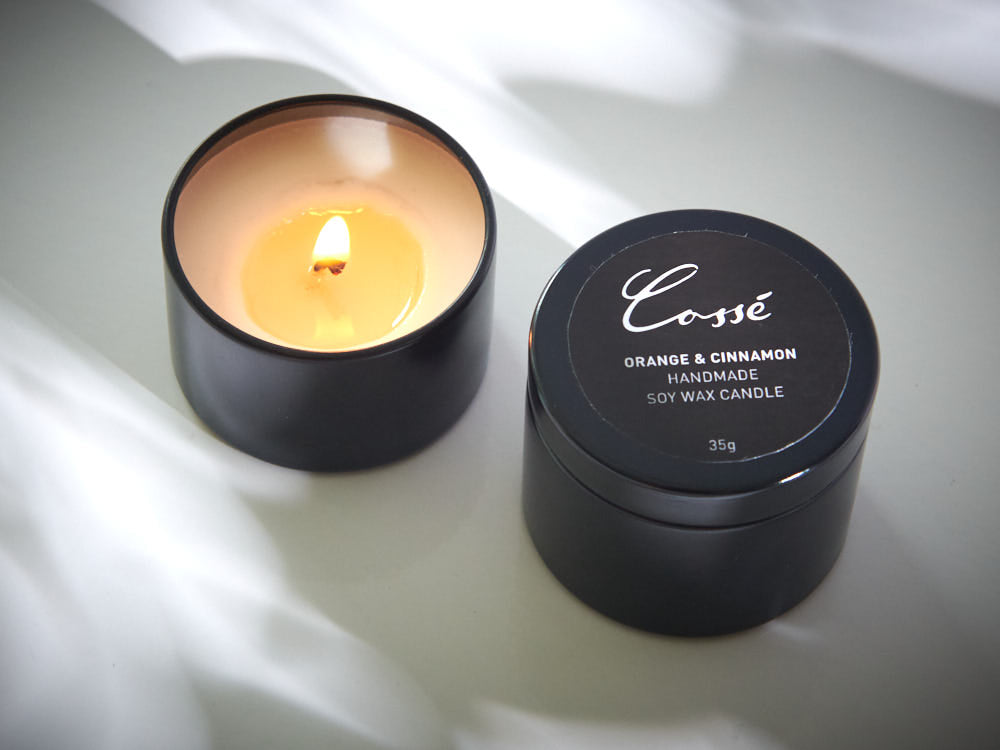Enhance Your Living Room with Luxurious Soy Candles and Home Fragrance
Enhance Your Living Room with Luxurious Soy Candles and Home Fragrance
Blog Article
From Wick to Wax: Recognizing the Chemistry Behind Soy Wax Candles and Their Ecological Effect
As we brighten our spaces with the warm radiance of candles, there exists a realm of detailed chemistry behind the relatively easy act of lighting a soy wax candle light. The choice in between soy and paraffin wax prolongs beyond simple aesthetics, diving into the world of ecological impact and the extremely structure of the materials. Recognizing the molecular structure of soy wax and its burning process drops light on the emissions launched right into our environments. Join us as we decipher the clinical complexities behind soy wax candles and discover their implications on our atmosphere.
Soy Wax Vs. Paraffin Wax
When comparing soy wax and paraffin wax for candle production, it is important to recognize the distinctive characteristics and benefits of each product. Soy wax is a natural, renewable resource acquired from soybean oil, making it green and naturally degradable - soy wax candles. In contrast, paraffin wax is a by-product of oil refining, which elevates issues regarding its ecological impact and sustainability
Soy wax candle lights melt cleaner and emit less soot contrasted to paraffin wax candles, making them a much healthier option for indoor air high quality. Additionally, soy wax has a reduced melting point, permitting a longer-lasting candle that distributes fragrance better. Paraffin wax, on the various other hand, has a tendency to melt faster and much less easily, potentially releasing harmful chemicals right into the air.
From a sustainability perspective, soy wax is favored for its biodegradability and renewable sourcing, straightening with the growing customer choice for ecologically mindful items. While paraffin wax has actually been a conventional choice in candle light making because of its cost and convenience of usage, the change towards environmentally friendly alternatives like soy wax is acquiring momentum in the market.
Chemical Structure of Soy Wax

Burning Process in Soy Candles
The chemical structure of soy wax straight affects the combustion procedure in soy candles, affecting elements such as shed time, scent launch, and environmental influence. When a soy candle is lit, the warmth from the fire melts the wax near the wick.
The burning performance of soy candles is affected by the pureness of the soy wax and the top quality of the wick. A clean-burning soy candle light with an appropriately sized wick will produce a stable flame and minimize soot formation. This not just expands the shed time of the candle however also improves the launch of fragrances. Additionally, soy wax candle lights have a lower ecological impact contrasted to paraffin candles as a result of their biodegradable and eco-friendly nature.

Environmental Advantages of Soy Wax

Thought about a lasting alternative to traditional paraffin wax, soy wax supplies remarkable environmental advantages that make it a popular choice amongst eco-conscious customers. One significant advantage of soy wax is its renewable sourcing. Soy wax is originated from soybean oil, which is Visit Your URL mainly grown in the United States. The growing of soybeans helps support neighborhood farmers and decreases the reliance on non-renewable fossil fuels used in paraffin wax production. Furthermore, soy wax is naturally degradable, suggesting it damages down normally without launching unsafe contaminants into the setting. This particular makes soy wax candles a more eco-friendly choice compared to paraffin wax candles, which are made from oil, a non-renewable resource. In addition, soy wax burns cleaner and creates much less residue than paraffin wax, adding to much better indoor air quality and decreasing the demand for cleansing and upkeep. Generally, the environmental benefits of soy wax line up with the growing need for sustainable and green items out there.
Recycling and Disposal Factors To Consider
Reusing and correct disposal of soy wax candles play a crucial duty in keeping environmental sustainability and minimizing waste in areas and families. When it comes to reusing soy wax candle lights, the initial step is to guarantee that the candle has melted totally.

In regards to disposal, Clicking Here if recycling is not an option, soy wax candles are biodegradable and can be safely taken care of in the majority of family waste systems. It is constantly advised to inspect with local reusing centers or waste monitoring services for particular guidelines on candle light disposal to ensure correct handling and ecological defense.
Conclusion
To conclude, the chemistry behind soy wax candles exposes their ecological benefits over paraffin wax candles. Soy wax, originated from soybean oil, burns cleaner and generates less residue when contrasted to paraffin wax. The burning process in soy candles is a lot more efficient, leading to a longer and more also melt. Furthermore, soy wax is eco-friendly and naturally degradable, making it an extra lasting option for candle light manufacturing. Reusing and proper disposal of soy wax candle lights better add to their ecological influence.
When comparing soy wax and paraffin wax for candle light making, it is crucial to understand the distinctive features and Learn More Here advantages of each material (candles).Soy wax candles melt cleaner and discharge much less soot contrasted to paraffin wax candle lights, making them a healthier choice for interior air quality.Thought about a sustainable choice to standard paraffin wax, soy wax offers noteworthy ecological advantages that make it a preferred selection among eco-conscious consumers. Soy wax burns cleaner and creates much less residue than paraffin wax, contributing to far better indoor air quality and minimizing the demand for cleansing and upkeep.In conclusion, the chemistry behind soy wax candle lights exposes their environmental benefits over paraffin wax candles
Report this page